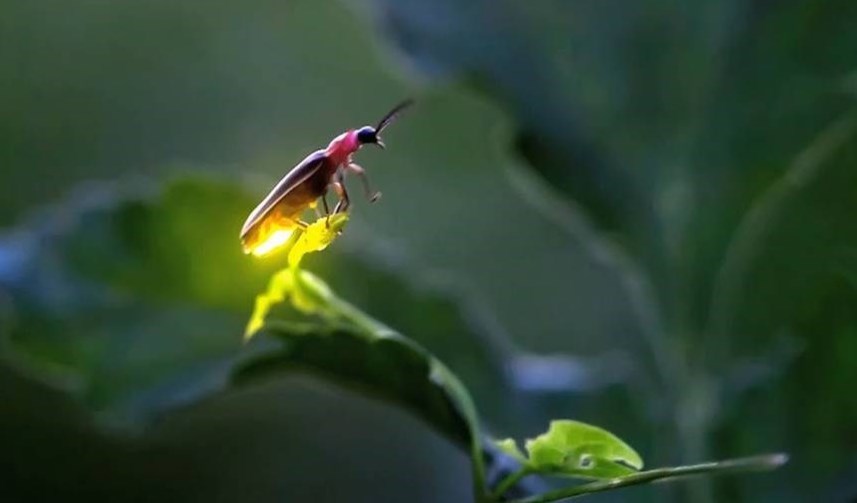Watching the twinkling magic from fireflies is a magnificent summertime experience. But seeing those nighttime sparkles of light are becoming fewer and far between.
Researchers say threats such as light pollution, habitat loss, and climate change are contributing to their decline, risks that could ultimately deprive future generations from seeing one of nature’s most attractive spectacles.
“There’s been a worry, especially in the past 50 years,” said Aaron Fairweather, a post-doctoral researcher in the School of Environmental Sciences at the University of Guelph.
“We know that insect populations worldwide are declining at an alarming rate. And fireflies, because of the ways that they communicate, the things they feed on, and their habitat is so intrinsically connected to human development and human persistence in the world, they are at greater risk than any other species. There is a huge threat to their populations.”
According to Fairweather, the number of fireflies has decreased by about 35 per cent over the past five decades.
“Fireflies rely on heavily wooded and wet habitat, such as bogs, swamps, and wetlands. And having a dense forest canopy that creates the moist understory and leaf litter, fireflies really rely on all of that too,” Fairweather said.
“And that’s also directly related to a lot of their food sources such as slugs, snails, and mosquito larvae."
Fairweather says a wetter climate could definitely bring in more numbers.
“With heavier rainfall, these standing waters are what fireflies rely on, in terms of their big food source,” Fairweather said.
“We’ve seen the consequences of what a dry season can do to the forest. Once the underbrush gets to dry, forest fires pop up. The wetness in the understory is lost."
As the human population continues to grow, more and more wild habitat is being developed for human use.
“And on top of that, we are finding, very recently too, that other sources are even more problematic then previously thought, including light pollution,” Fairweather said.
“There was a study a couple of years ago from the U.S. that really hit home in terms of how bad light pollution can be for the flashing nocturnal fireflies that rely on their natural ability for communication and mating. It disrupts their ability to sense each other in the night.”
An assessment published in 2021 revealed that 11 per cent of North American firefly species are threatened with extinction, two per cent are near threatened, and 33 per cent are categorized as species of least concern, according to the IUCN Red List.
In terms of light pollution three-quarters of firefly species are nocturnal. Both female and male fireflies use their glowing lights to communicate with one another, to find mates, to keep predators away, and to establish territory.
Research has shown that artificial lights, including streetlights, house lights, and car headlights make it more difficult for fireflies to communicate.
A couple years ago, Fairweather was a guest on a TVO Kids show on fireflies.
“We were shooting just outside of Rouge Park in Toronto and we went out to a field. There were fireflies everywhere, hundreds of them,” Fairweather said.
“But as soon as the flood lights came on, in a matter of seconds, they all disappeared. It’s incredible how fast that happens and how impactful light really is.”
In Muskoka, Ont., Fairweather says residents have taken the initiative to turn off porch lights when not in use.
“They have actually put initiatives in place to let people know that if they turn their lights off in the evenings, they will have a better chance of seeing fireflies,” Fairweather said.
“This can be a huge help for firefly populations.”
The Xerces Society for Invertebrate Conservation offers advice on how people can help to protect fireflies including mowing less to preserve habitat, reducing the use of chemical pesticides, allowing slugs and snails to live, since fireflies love eating, and turning off unnecessary lights at night.
In North America, there are 173 species of fireflies.
“Fireflies were one of the earliest species that really caught my eye. When I was a kid, one of my first memories was going out fishing with my dad. And just as dusk was hitting, you start seeing them flashing. I remember that wonder, that nature is producing this light,” Fairweather said.
“And they are very safe and docile. You can hold them, and they won’t bite. They are such gentle creatures that produce this beautiful moment."
And from there, Fairweather’s fascination with fireflies has only grown.
“The diversity that we have here, how each species has its own very specific signalling to communicate with each other, it’s just incredible how evolution has just pushed that forward and how connected this flashing is with their entire life,” Fairweather said.
Even just from a chemical perspective, the light they produce, Fairweather says, is fascinating.
“They can produce this bright flash, the energy produced is cold light, not like a hot light bulb. And they can do that in their bodies without producing any heat. It's a clean bright light that is just incredible,” Fairweather said.
“To see this beautiful flashing all around you, that you can even actually catch and hold in your hands, it really is such a magical moment.”



